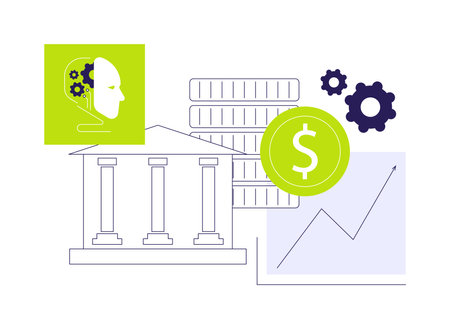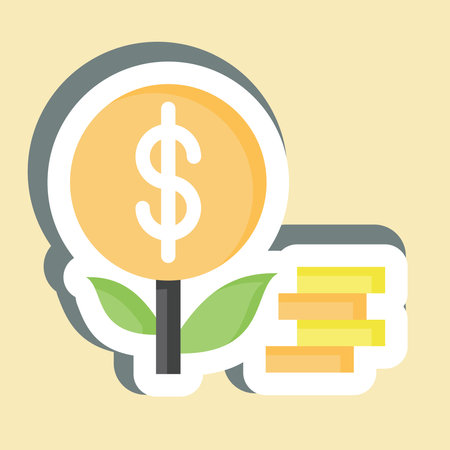1. What is a Stocks and Shares ISA?
If you’re looking to grow your money in the UK while making the most of your tax-free allowances, a Stocks and Shares ISA could be just the ticket. But what exactly is it? Simply put, a Stocks and Shares ISA (Individual Savings Account) is a type of investment account that lets you put your money into things like shares, bonds, funds, and other qualifying investments – all without paying income tax or capital gains tax on your profits. Unlike a Cash ISA, which is just for saving money with interest, a Stocks and Shares ISA gives you the chance to invest in the stock market and potentially earn greater returns over the long term. The main difference between this type of ISA and others, such as Lifetime ISAs or Innovative Finance ISAs, is that it’s specifically geared towards investing rather than just saving. You get an annual allowance (for the 2024/25 tax year, it’s £20,000), and you can spread this across different types of ISAs if you want – but the total can’t go above that limit. With a Stocks and Shares ISA, your investments can go up or down in value, so there’s more risk compared to keeping your cash in a savings account. However, it also means more opportunity for your money to grow over time if you’re patient and stick to sound investing habits. In short: it’s a great way for UK residents to start building their wealth while keeping as much of their gains as possible away from the taxman.
2. Tax Benefits and Allowances
One of the most attractive features of a Stocks and Shares ISA is its generous tax benefits, which make it a favourite among UK investors looking to grow their wealth efficiently. Unlike standard investment accounts, any gains or income generated within your Stocks and Shares ISA are sheltered from both Capital Gains Tax (CGT) and Income Tax. This means you can invest in shares, bonds, funds, and other eligible securities without worrying about losing a chunk of your profits to the taxman.
Annual ISA Allowance
Every tax year, the UK government sets an annual ISA allowance. For the 2024/25 tax year, this allowance is £20,000 per person. You can invest up to this amount across all your ISAs (including Cash ISAs, Stocks and Shares ISAs, Lifetime ISAs, and Innovative Finance ISAs), but the total combined contributions must not exceed the limit.
| Tax Year | ISA Allowance |
|---|---|
| 2024/25 | £20,000 |
| 2023/24 | £20,000 |
How These Benefits Impact Your Savings
The tax-free nature of a Stocks and Shares ISA means every penny of profit stays in your pocket. Whether your investments pay dividends or grow in value over time, you won’t pay Income Tax or CGT on any returns as long as they remain within your ISA wrapper. This can make a massive difference over the years due to the power of compounding returns without tax drag. Here’s a quick comparison:
| Account Type | Capital Gains Tax | Dividend Tax |
|---|---|---|
| Stocks and Shares ISA | No | No |
| General Investment Account (GIA) | Yes (over annual CGT allowance) | Yes (over dividend allowance) |
Use It or Lose It!
Your annual ISA allowance cannot be carried forward—if you don’t use it by the end of the tax year (5 April), it’s gone for good. So if you’re serious about maximising your savings and investments while keeping more of your returns, it pays to make full use of your yearly allowance whenever possible.

3. How to Open and Fund an ISA
Step-by-Step Guidance for UK Residents
If you’re ready to start investing with a Stocks and Shares ISA, the process is straightforward. Here’s how you can open and fund your account, making sure you meet all the necessary requirements.
Step 1: Check Your Eligibility
To open a Stocks and Shares ISA, you must be:
- A UK resident (England, Scotland, Wales, or Northern Ireland)
- Aged 18 or over
- Opening the ISA in your own name (you cannot open one on behalf of someone else, except for a Junior ISA)
Step 2: Choose Your ISA Provider
There are many banks, building societies, and investment platforms that offer Stocks and Shares ISAs. Compare fees, investment options, customer service, and online platform usability. Some popular choices include Hargreaves Lansdown, Vanguard, AJ Bell, and Halifax.
Step 3: Gather Required Documents
You’ll need proof of identity (like a passport or driving licence) and proof of address (such as a recent utility bill or bank statement). Most providers allow you to apply online in just a few minutes.
Step 4: Complete Your Application
Fill in the application form on your chosen provider’s website. Make sure all details are correct—especially your National Insurance number. You’ll usually set up login details at this stage too.
Step 5: Fund Your ISA
You can add money to your Stocks and Shares ISA by:
- Bank transfer from your current account
- Setting up a Direct Debit for regular payments (great for budgeting!)
- Lump sum payments whenever you have extra cash to invest
Remember that the annual ISA allowance for the 2024/25 tax year is £20,000. You can split this allowance across different types of ISAs but not exceed the total limit.
Step 6: Transfer Funds from Another ISA (Optional)
If you already have an existing Cash ISA or Stocks and Shares ISA with another provider, you can transfer these funds without losing your tax-free status. Contact your new provider—they’ll handle the transfer process for you. Never withdraw funds yourself if you want to retain the tax benefits.
Top Tip:
Shop around each year to make sure your provider still offers good value for money. Fees can eat into your returns over time!
4. Choosing Investments for Your ISA
Picking the right investments for your Stocks and Shares ISA is a crucial step, whether youre new to investing or already have some experience. The choices you make will impact your potential returns and how much risk youre exposed to, so its worth taking your time to understand your options.
Types of Investments You Can Hold in an ISA
| Investment Type | Description | Typical Risk Level |
|---|---|---|
| Shares | Ownership in individual companies listed on the stock market | Medium to High |
| Funds (Unit Trusts/ OEICs) | Pooled investments managed by professionals, investing in various assets | Low to High (depending on fund type) |
| Bonds | Loans to governments or companies that pay interest over time | Low to Medium |
| Investment Trusts & ETFs | Funds traded on the stock exchange, often with diversified holdings | Low to High (depending on focus) |
Tips for Selecting Investments
- Diversify: Spread your money across different assets, sectors, and regions to reduce risk.
- Consider Your Goals: Are you saving for retirement, a house deposit, or just looking to grow your wealth? Match your investment choices to your time horizon and goals.
- Understand Risk: Shares can offer higher returns but come with greater ups and downs. Funds and bonds may be less volatile but can still fall in value.
- Start Simple: If you’re new to investing, consider index funds or ETFs that track the whole UK market or global markets. They’re generally low cost and easy to manage.
- Check Fees: Investment platforms and funds charge fees. Look for competitive charges as high fees can eat into your returns over time.
Risk Considerations: For Beginners & Experienced Investors
- If you’re just starting out, avoid putting all your eggs in one basket—don’t invest everything in a single share or sector.
- If you’re more experienced, consider balancing higher-risk investments with some safer assets like government bonds or cash within your ISA allowance.
A Quick Comparison: Shares vs Funds vs Bonds
| Shares | Funds/ETFs | Bonds | |
|---|---|---|---|
| Diversification Needed? | Yes (you choose shares yourself) | No (fund is already diversified) | N/A (bonds are lower risk by nature) |
| Suits Beginners? | No (higher risk & research needed) | Yes (easy way to start investing) | Yes (lower risk option) |
The Bottom Line
Selecting investments for your ISA isn’t about chasing the highest returns—it’s about finding what suits your financial goals, comfort with risk, and investment timeline. Take advantage of online research tools offered by UK platforms like Hargreaves Lansdown or AJ Bell, read up on fund factsheets, and don’t hesitate to seek professional advice if you’re unsure. Remember: you can always adjust your ISA portfolio as you learn more or as your needs change.
5. Fees, Charges, and Provider Comparison
When investing through a Stocks and Shares ISA in the UK, it’s essential to understand the different fees and charges you might encounter. These costs can have a significant impact on your long-term returns, so being savvy about what you’re paying for – and why – is key to making your money work harder.
Common Fees with Stocks and Shares ISAs
The main types of fees you’re likely to come across include:
Account Management Fees
Most ISA providers charge an annual management fee or platform fee, typically ranging from 0.25% to 0.45% of your portfolio value per year. This covers the cost of administering your account and providing online access.
Fund Charges
If you invest in funds, each fund has its own ongoing charges figure (OCF), which usually sits between 0.1% and 1% annually. Index tracker funds are often cheaper than actively managed ones.
Trading Fees
Every time you buy or sell shares or funds, some platforms charge a dealing fee – this might be a flat rate (e.g., £5-£12 per trade) or a percentage of the transaction amount.
Other Costs
Keep an eye out for exit fees if you plan to transfer your ISA elsewhere, as well as foreign exchange charges if you’re buying overseas investments.
Comparing Providers: How to Shop Around
Not all ISA providers are created equal when it comes to fees. Some specialise in low-cost DIY investing, while others offer more guidance at a higher price point. It pays to:
- Use comparison sites like MoneySavingExpert or Which? to see up-to-date fee tables
- Calculate your expected investment size and trading frequency to work out which provider suits your style best
- Read the small print for any hidden costs or introductory offers that expire after the first year
Top Tip for UK Savers
If you’re just starting out or investing modest amounts, look for platforms with low or zero monthly fees and no minimum investment requirements. For larger portfolios, even small differences in annual charges can add up significantly over time, so don’t be afraid to switch if you find a better deal.
The Bottom Line
Your choice of Stocks and Shares ISA provider can make a real difference to your overall returns. Take the time to compare, factor in all potential costs, and remember that every pound saved on fees is another pound invested towards your future goals.
6. Withdrawing Money and Flexibility
One of the most important things to consider when investing in a Stocks and Shares ISA is how and when you can access your money. Understanding the withdrawal rules, flexible ISA features, and any potential penalties will help you make the most of your investment while avoiding unexpected pitfalls.
How and When Can You Withdraw?
You are free to withdraw money from your Stocks and Shares ISA at any time, whether it’s to cover an emergency expense, fund a big purchase, or simply move your investments elsewhere. There are no restrictions on when you can take your money out, and you won’t pay any tax on withdrawals. However, it’s important to remember that selling investments can take a few working days to process, depending on the assets you hold.
What Happens After You Withdraw?
The standard rule for ISAs is that once you withdraw money, that part of your annual ISA allowance is lost for the tax year. For example, if you invest £10,000 and later withdraw £2,000, you cannot replace that £2,000 within the same tax year if you have already reached your annual limit.
Flexible ISAs Explained
Some providers offer what’s known as a Flexible ISA feature. This allows you to withdraw money and replace it within the same tax year without losing any of your annual allowance. For example, if you withdraw £2,000 from a flexible ISA and have not exceeded your yearly limit, you can put that £2,000 back in during the same tax year without penalty. Not all Stocks and Shares ISAs are flexible, so check with your provider before making withdrawals if this flexibility is important to you.
Potential Penalties and Considerations
While there aren’t direct penalties for withdrawing from a Stocks and Shares ISA, there may be indirect costs or drawbacks. For instance:
- You might lose potential future gains if you sell investments during a market downturn.
- If your account is not flexible, withdrawn amounts cannot be re-contributed in the same tax year once you hit your allowance.
- Certain investments may carry exit fees or transaction costs when sold.
Smart Withdrawal Tips
- Plan ahead: Only withdraw what you need to avoid missing out on future growth.
- Check if your provider offers flexibility before making withdrawals.
- Factor in processing times for sales and transfers—don’t expect instant cash access.
In summary, Stocks and Shares ISAs give UK investors considerable freedom to access their funds without tax charges. However, understanding the nuances around withdrawals and choosing a flexible ISA provider (if needed) can help you maximise both convenience and long-term growth potential.


